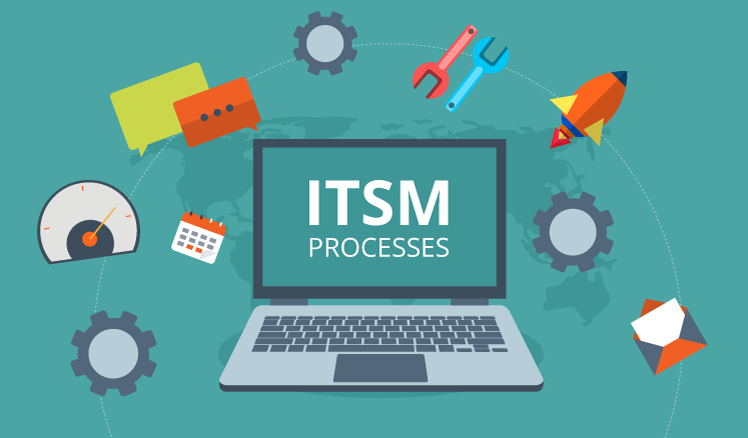A business process is any combination of operations that assists a company in achieving a specified goal. It’s generally a repeatable transaction that includes a series of steps involving multiple IT systems in the context of automation.
Fulfilling and invoicing a customers’ purchasing order, approving a mortgage application, accomplishing data entry, recruitment of new employees, other banking sectors, human resource tasks, and business operations are all examples of business processes. Multiple email threads, paperwork, as well as handoffs are common in managed advertising workflows. Minor human error can set off a chain reaction of inefficiency, resulting in communication breakdowns, bottlenecks, as well as missed deadlines. At a larger scale, these problems grow. Business process automation service is available in various companies.
These issues are addressed by automation software. An organization can regain control of business processes, communicate better, increase customer satisfaction, and reduce confusion by implementing a reusable and flexible business automation strategy. Employees can focus on essential work instead of laborious, repetitive, and frequently annoying duties when a company process is automated. Business process automation in India is good.
Table of Contents
Business Process Automation Types
As you can see from the samples above, we are only scraping the surface of business process automation software capabilities. There are many methods for enlisting software to aid their workforce. To put it another way, BPA can be applied in the following ways:
- To collect and organise data files
- To automate time-consuming chores
- Data sources, as well as services, must be connected and integrated.
- To create apps that will revolutionise one company
What is the features of Business Process Automation?
Digital Transformation
As technology advances, one’s company will regularly undergo digital transformation. This transition can be stressful at times, but BPA is another option to ease towards a more technology-oriented work atmosphere. At the very least, it’s a positive start that will have a cascading effect on productivity.
Increased Employee Productivity as well as Satisfaction
One’s employees will be relieved of the strain of repeated duties if the user automates them. As a result, they’ll have more time to focus on hard, intellectually fascinating jobs and allow them to feel like they’re contributing to the company’s success. Employee satisfaction, productivity, as well as turnover all, improve as a result of this.
Transparency and Management
It’s easy to become engrossed in day-to-day activities without ever pausing to consider how they function. BPA allows you to explicitly identify, explain, and evaluate how current workflows occur and thus are managed to optimise processes. This not only provides insight into how to improve operations but it could also serve as a learning ground for new staff members.
Effortless Operations
BPA streamlines processes by allowing individuals to see how an operation is progressing and what its current status is. As a result, it can help prevent essential tasks from falling through the cracks.
Minimize Money and Effort
When things follow their natural route, it saves time and eliminates unnecessary back and forth between parties. As a result, when activities are running efficiently, money is protected.
Reduced Compliance Risk
All enterprises as well as enterprises, particularly those in finance, are subject to laws. As a result, digital software may help mitigate risks by recording audit trails and securing the history of operations. For constant oversight and regulatory compliance, BPA software can also generate reports as well as automatically update dashboards.
Reduce Human Error
When individuals are responsible for data entry as well as management, things can quickly become chaotic. There is a substantial risk of human mistakes, which can become more prevalent as data grows. On the other hand, automation tools are designed to have extremely high accuracy rates, reducing the chance of human error.
The Process of Implementing Business Process Automation!
1. Determine which tasks should be automated.
- Refer to the preceding list.
- Use a flow chart to identify tasks in one’s organisation that can be automated.
2. Outline your company’s objectives
- What is your most recent objective?
- What role will automation play?
- What criteria will you use to determine success?
3. Choose the Correct Tool
When choosing the proper tool, make sure it meets the following criteria:
- It’s simple to use and understand.
- Has scalability and flexibility
- Make absolutely sure the tool can pull information from data tools so it can function seamlessly
with the data one company already has. It will aid in the central storage and security of information, allowing everyone with access to get insights and benefit from the system’s operations.
4. Management of Change
- Set up training as well as tutorials for employees, particularly those who’ll be dealing with technology on a daily basis.
- Create a change-friendly culture.
- Involve your group.
- Training sessions should be used to provide ongoing education.
5. Measure and monitor
- These tools aren’t supposed to be static; they evolve with one’s company.
- Use them to keep track of KPIs and make adjustments as needed.
Conclusion
BPA is the use of software to automate repeatable, multiphase business transactions. In probably the most common type of automation, BPA solutions are often complicated, coupled to multiple enterprise information systems (IT) systems, as well as suited to a company’s individual needs. BPA is frequently used as part of a digital strategy to streamline procedures as well as improve efficiency. The numbers don’t lie. When it comes to enhancing efficiency incorporating processes, RPA, as well as business process automation solutions, continue to exceed expectations. Business automation software solutions are available online also.


